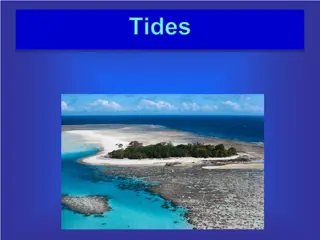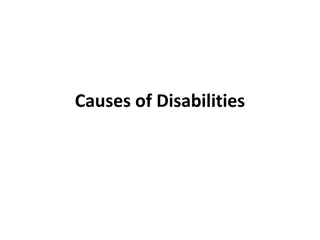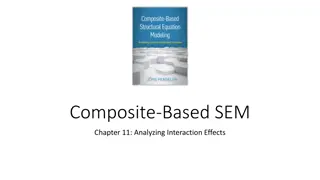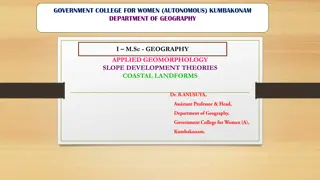Understanding the Causes of Tides and Their Effects on Earth
Tides are a result of the gravitational interactions between Earth, the Moon, and the Sun. The Moon's gravity creates tidal bulges on Earth's surface, leading to the daily rise and fall of water levels known as tides. These phenomena have a significant impact on ocean coastlines and the overall water flow on our planet.
Download Presentation

Please find below an Image/Link to download the presentation.
The content on the website is provided AS IS for your information and personal use only. It may not be sold, licensed, or shared on other websites without obtaining consent from the author. Download presentation by click this link. If you encounter any issues during the download, it is possible that the publisher has removed the file from their server.
E N D
Presentation Transcript
What Are Tides? Tides are the daily rise and fall of Earth s waters on its coastlines. As the tide comes in, the level of water on the beach rises, and as the tide goes out, the level of water on the beach goes down. Tides occur in all bodies of water, but they are most noticeable in the ocean and large lakes.
High Tides High tides are when the water reaches its highest point.
Low Tides Low tides are when the water reaches its lowest point.
What Causes Tides? Tides are caused by the interaction of Earth, the Moon, and the Sun. Gravity is the reason for tides. Gravity is the force exerted by an object that pulls other objects toward it.
Moons Gravity and Tides The Moon s gravity affects the water on Earth s surface. Since the Moon is close to the Earth, it has a strong gravitational pull on it (closer objects have stronger gravitational pull).
Moons Gravity Tidal Bulges The Moon pulls on the water on the side nearest to it more strongly than it pulls on the center of the Earth. This pull creates a bulge of water, called a tide bulge, on the side of Earth facing the the Moon.
Moons Gravity Tidal Bulges The water on the side of Earth facing away from the Moon has a less strong pull. This water is left behind and forms a second bulge. As Earth rotates, different places on the planet s surface pass through the areas of the tidal bulges and have the change in water levels.
Tidal Bulges High Tide In places where there are tidal bulges, high tide is occurring along the coastlines. High Tide High Tide
Tidal Bulges Low Tide In places between the bulges, low tide is occurring. LOW TIDE LOW TIDE
Suns Gravity and Tides The Sun is so large that its gravity also affects tides. At times, the Sun and Moon pull together on Earth s waters in the same direction. At other times they pull in different directions.
Daily Tide Cycle Most seashores have four tides every day two high tides and two low tides. A change of from low to high tide or vice versa takes about 6 hours and 12 minutes. Changes in tides can be drastic (can notice) or or lessdramatic (can t notice).
Monthly Tide Cycle Changes in the positions of Earth, the Moon, and Sun affect the height of tides during a month.
Spring Tides Spring tides occur 2 times a month, during a full and new moon when the Earth, Sun, and Moon are lined up. Spring tides are higher and lower than normal tides. strongtides
Neap Tides Neap tides occur in between spring tides, at the first and third quarters of the Moon when the Sun and Moon pull at right angles to each other. Neap tides are not as high or low as normal tides. weaktides























